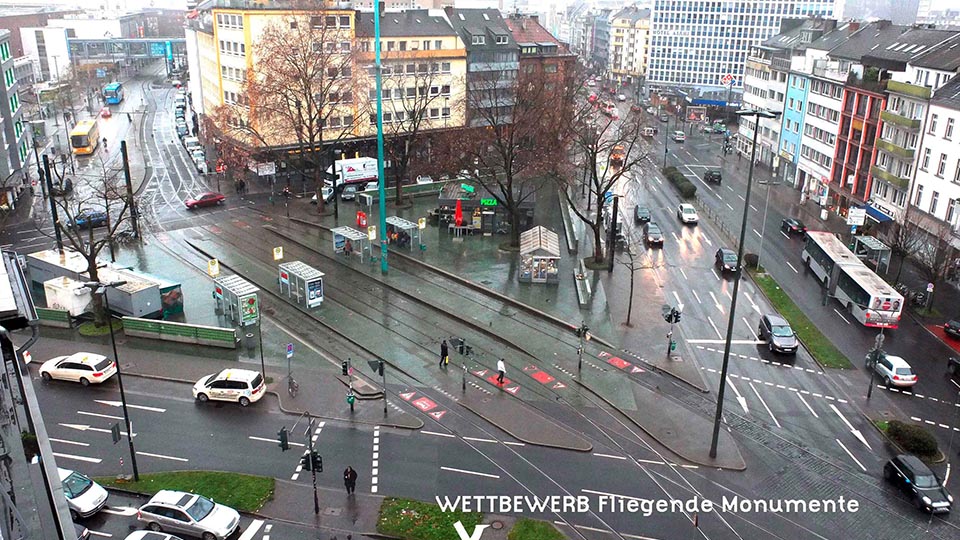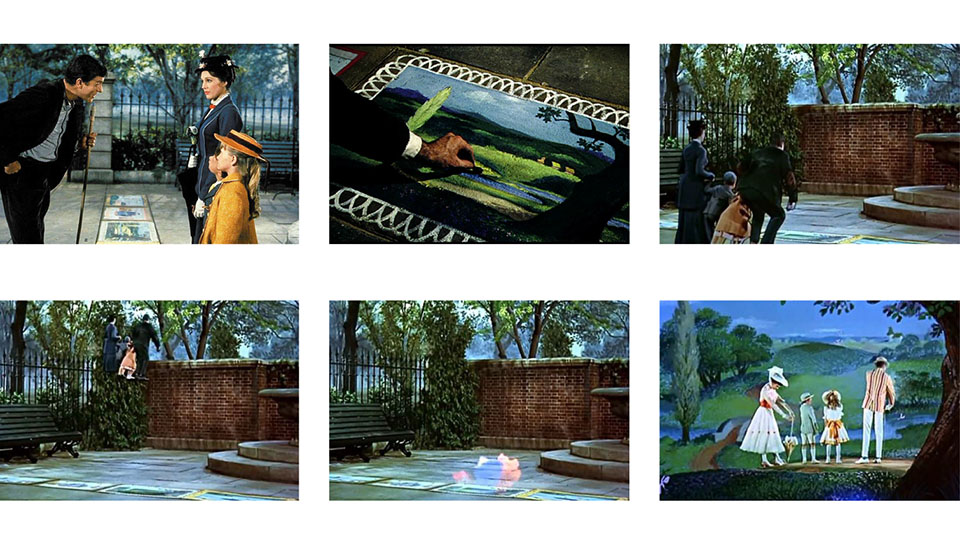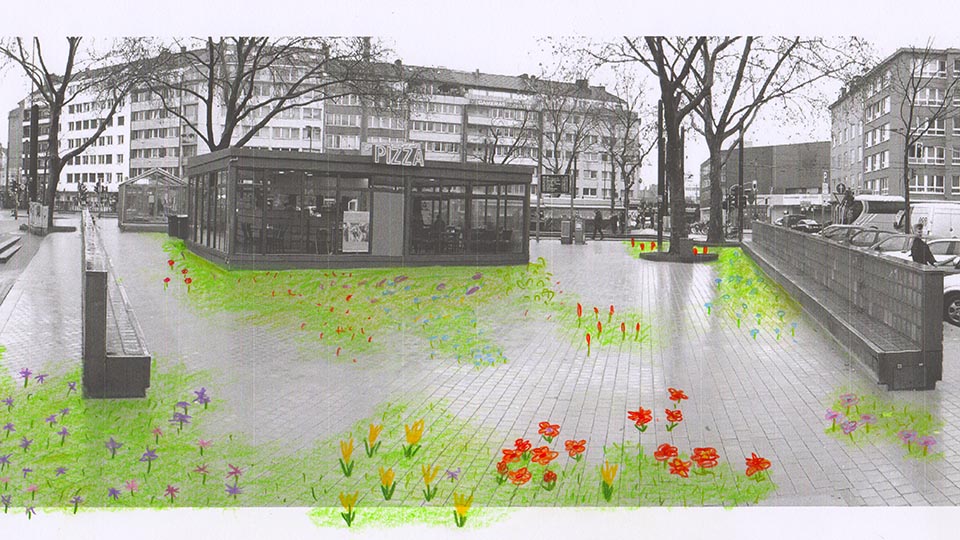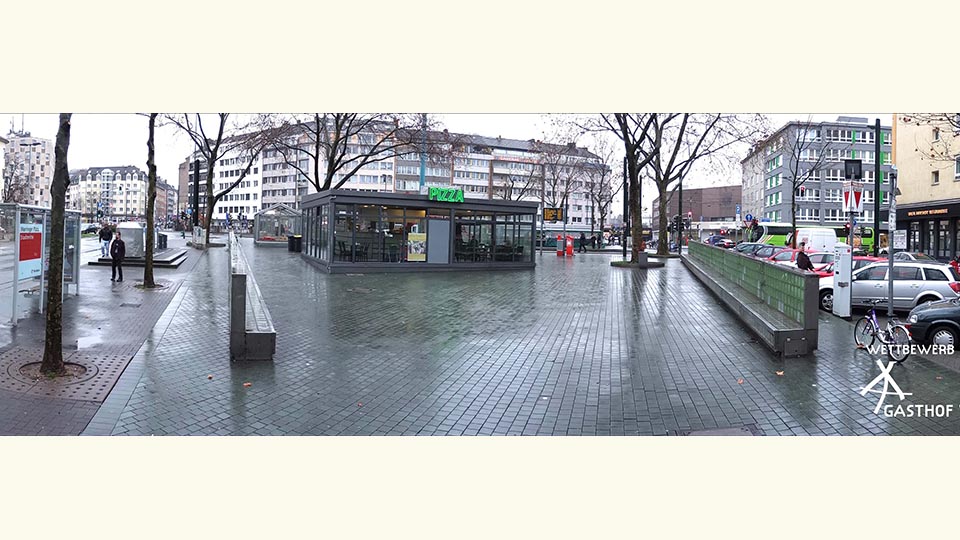Studio Hildebrand
Mag.Art. Christoph Hildebrand
+49 0163 5810594
ch@studio-hildebrand.net




Mag.Art. Christoph Hildebrand
+49 0163 5810594
ch@studio-hildebrand.net








//
„Jolly Holiday“ ist ein Song aus dem berühmten Disney Film „Mary Poppins“ von 1964 nach dem gleichnamigen Roman der australischen Schriftstellerin P.L.Travers aus dem Jahr 1934. Die Geschichte mit ihren vielen anarchischen Wendungen hat auch heute nicht an Faszination verloren. Mit dem Lied „Jolly Holiday“ (dt.: „Was ein herrlicher Tag“) wird im Film eine der schönsten Szenen markiert, bei der das Kindermädchen Mary und die beiden Kindern Jane und Michael in das Bild des Lebenskünstlers und Pflastermalers Bert springen und sich in einer idealtypischen Traumwelt vergnügen.
Das auf das Pflaster gemalte Bild ist das Tor zu einer alternativen Gegenwelt. Dies ist der Ausgangspunkt für mein „Fliegendes Monument“. Im Gegensatz zum Film, wo nur ein kleines Bild zu sehen ist, soll der gesamte Worringer Platz in einem über mehrere Tage dauernden Prozess unter Mithilfe von Anwohnern, Passanten und natürlich Kindern mit einer Kreidemalerei bedeckt werden, so dass am Ende alle Platznutzer sich tatsächlich in einer Phantasiewelt bewegen . . . bis der große Regen kommt und das graue Plaster wieder zum Vorschein bringt.
Ein Motiv, das einen maximalen Kontrast zum urbanen Raum des Worringer Platzes darstellt, wäre die idealtypische Landschaft, die auch im Film zum Einsatz kommt: eine saftig grüne Wiese mit üppigen Blumen, in die sich die vorhandenen Bäume ganz selbstverständlich integrieren. Diese Inszenierung würde gleichzeitig das „Zitat“ für die Besucher ablesbar machen. Aber auch andere Szenarien sind denkbar – hier ist die Phantasie der Beteiligten gefragt.
Das Projekt ist nicht nur vordergründig als Zivilisationskritik gemeint. Gemessen an Lebenssituationen in asiatischen Megacities ist der Worringer Platz ein schön organisierter und gut gestalteter Ort. Für mich als Urbanist ist er durchaus attraktiv, mit dem vielen Leben, das an und um ihn stattfindet. Das Konzept stellt vielmehr die Frage, was der Einzelne für ein erfülltes Leben braucht. Der Städter braucht Natur als Ausgleich zu Lärm und Hektik und der „Provinzler“ sucht die Stadt als Gegenpol zu seinem beschaulichen Alltag. Oder wie Mary Poppins es den verwunderten Kindern gegenüber konstatiert: „Don’t you know that erverybody’s got a fairyland of their own.“
Es lebe der Supercalifragilisticexpialigetismus!
//
„Jolly Holiday“ is a song from the famous 1964 Disney film „Mary Poppins“, based on the 1934 novel of the same name by the Australian writer P.L. Travers. The story with its many anarchic twists and turns has not lost its fascination even today. The song „Jolly Holiday“ (Engl.: „What a glorious day“) marks one of the most beautiful scenes in the film, in which the nanny Mary and the two children Jane and Michael jump into the painting of Bert, the artist of life and pavement painter, and enjoy themselves in an ideal dream world.
The picture painted on the pavement is the gateway to an alternative counter-world. This is the starting point for my „Flying Monument“. In contrast to the film, where only a small picture is shown, the entire Worringer Platz is to be covered with a chalk painting in a process lasting several days with the help of residents, passers-by and, of course, children, so that in the end all square users actually move in a fantasy world . . . until the big rain comes and brings the grey plaster out again.
A motif that provides maximum contrast to the urban space of Worringer Platz would be the ideal-typical landscape that is also used in the film: a lush green meadow with lush flowers, into which the existing trees integrate as a matter of course. This staging would at the same time make the „quotation“ readable for the visitors. But other scenarios are also conceivable – this is where the imagination of those involved is called for.
The project is not only meant superficially as a critique of civilisation. Measured against living situations in Asian megacities, Worringer Platz is a beautifully organised and well-designed place. For me as an urbanist, it is quite attractive, with all the life that takes place in and around it. The concept rather poses the question of what the individual needs for a fulfilled life. The city dweller needs nature as a balance to noise and hustle and bustle, and the „provincial“ seeks the city as an antipole to his contemplative everyday life. Or as Mary Poppins says to the astonished children: „Don’t you know that everybody’s got a fairyland of their own?
Long live supercalifragilisticexpialigetism!
P R O P O S A L Competition Flying Monuments Düsseldorf 2016 + D E S I G N coloured crayon / many residents / area app. 300sqm / + S U P P O R T / + M E D I A 4 images © Christoph Hildebrand + T A G S Light / Proposal / Urban / +
